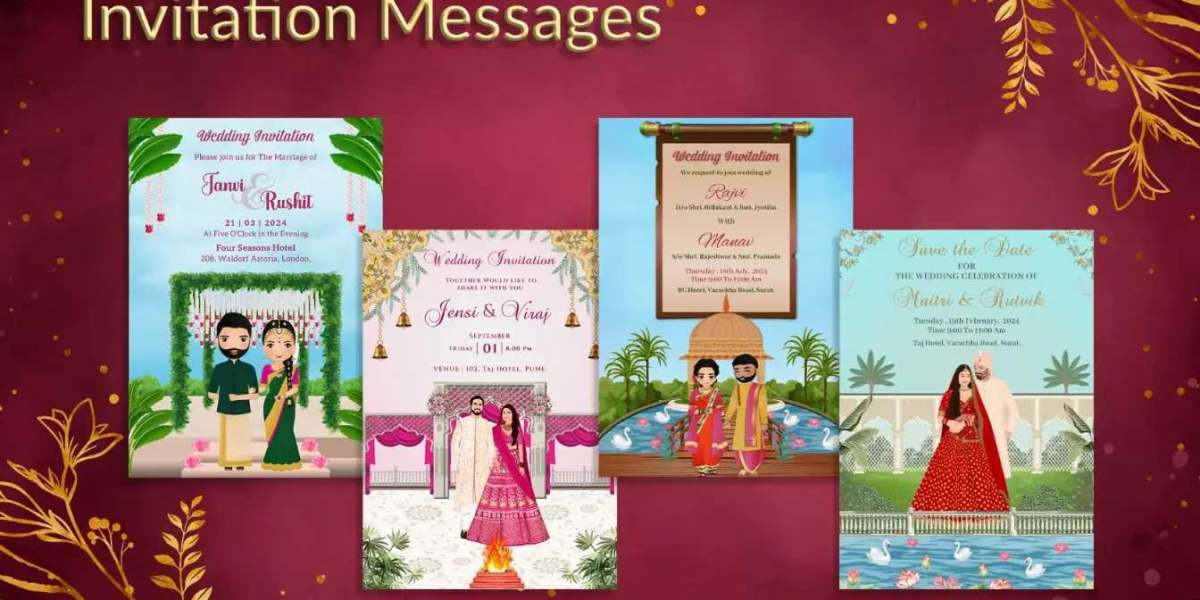Weddings are a celebration of love and unity, and the invitation sets the tone for this special occasion. Crafting the perfect message for invitation for wedding is essential to ensure that your guests feel the importance and joy of the event. In this comprehensive guide, we will delve into every aspect of writing an impactful wedding invitation message, ensuring that your invites stand out and convey all the necessary information with elegance and clarity.
Understanding the Importance of a Wedding Invitation Message
A wedding invitation message is more than just a formal request for guests to attend your wedding; it reflects your personal style, the theme of the wedding, and provides essential details about the event. It sets the stage for the experience your guests will have and ensures that they are well-informed about the day’s events.
Key Elements of a Wedding Invitation Message
1. Host Line
The host line is a fundamental part of the wedding invitation. Traditionally, this line includes the names of the individuals or families hosting the wedding. For many couples, this will be the parents or guardians. In modern contexts, it could be the couple themselves or a combination of both.
Example: "Mr. and Mrs. John Smith request the honor of your presence at the marriage of their daughter..."
2. The Request Line
This line extends a formal invitation to the guests. It is the core of the invitation, expressing the desire for the guest's presence at the wedding ceremony.
Example: "Please join us for the celebration of our marriage..."
3. The Couple’s Names
Including the names of the couple is crucial. This section typically features the full names of the bride and groom, as this is the most personal part of the invitation.
Example: "Emily Rose Johnson and Alexander James Brown..."
4. Date and Time
The date and time of the wedding are essential details that must be included clearly. This information should be straightforward to avoid any confusion among guests.
Example: "Saturday, the fifth of October, two thousand twenty-four, at four o'clock in the afternoon..."
5. Venue Details
Providing the venue details includes the location of the ceremony and reception, if different. Be sure to include the name of the venue, its address, and any additional information guests might need, such as parking instructions or directions.
Example: "St. Andrew's Church, 123 Main Street, Springfield..."
6. Reception Information
If the reception is held at a different location from the ceremony, include these details. Provide clear instructions on where and when the reception will take place.
Example: "Reception to follow at The Grand Ballroom, 456 Elm Street..."
7. RSVP Instructions
Clear instructions for RSVPs are essential to ensure you receive accurate guest counts. Provide a deadline and specify how guests should respond.
Example: "Please RSVP by September 15th to [email address] or call [phone number]..."
8. Dress Code
If there is a specific dress code for your wedding, include this information. This ensures guests are dressed appropriately for the occasion.
Example: "Black tie optional" or "Casual attire..."
9. Special Instructions
Any additional details such as accommodations, transportation options, or special requests should be included. This is particularly useful for out-of-town guests.
Example: "Hotel accommodations are available at The Springfield Inn, with a special rate for wedding guests..."
Choosing the Right Tone and Style
The tone and style of your wedding invitation message should align with the theme and formality of your wedding. Here are some style considerations:
Traditional vs. Modern
Traditional: Use formal language and classic phrasing for a traditional wedding. This style often includes full names and formal titles.
Modern: For a contemporary wedding, feel free to use casual language and a more relaxed tone. Modern invitations often reflect the couple’s personality and unique style.
Formal vs. Informal
Formal: Use a more structured format with formal language and traditional etiquette.
Informal: A casual wedding invitation can have a laid-back tone and might include personal touches or playful language.
Personalizing Your Invitation
Adding a personal touch to your wedding invitation message can make it more memorable. Consider including:
- A Personal Note: A brief message from the couple expressing excitement or gratitude.
- Quotes or Poems: A favorite quote or poem that resonates with the couple’s story.
- Custom Illustrations: Unique designs or illustrations that reflect the couple’s style or wedding theme.
Proofreading and Final Touches
Before sending out your invitations, ensure that the message is free from errors. Proofread carefully to check for spelling and grammatical mistakes. Consider having someone else review the invitation for an additional layer of accuracy.
Choosing the Right Paper and Design
The choice of paper and design can enhance the overall presentation of your message for invitation for marriage. High-quality paper and elegant designs can elevate the invitation and make it a keepsake for guests.
Example:
- Paper Types: Textured, glossy, or matte finishes.
- Design Elements: Incorporate motifs, monograms, or colors that match the wedding theme.
Sending Your Invitations
Once your invitations are finalized, plan the mailing process:
- Addressing: Ensure that all addresses are correct and legible.
- Mailing: Send out invitations well in advance to give guests ample time to RSVP and make travel arrangements.
By following these guidelines and paying attention to detail, your wedding invitation message will effectively communicate the significance of your special day and leave a lasting impression on your guests.








